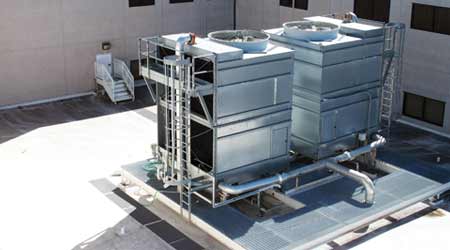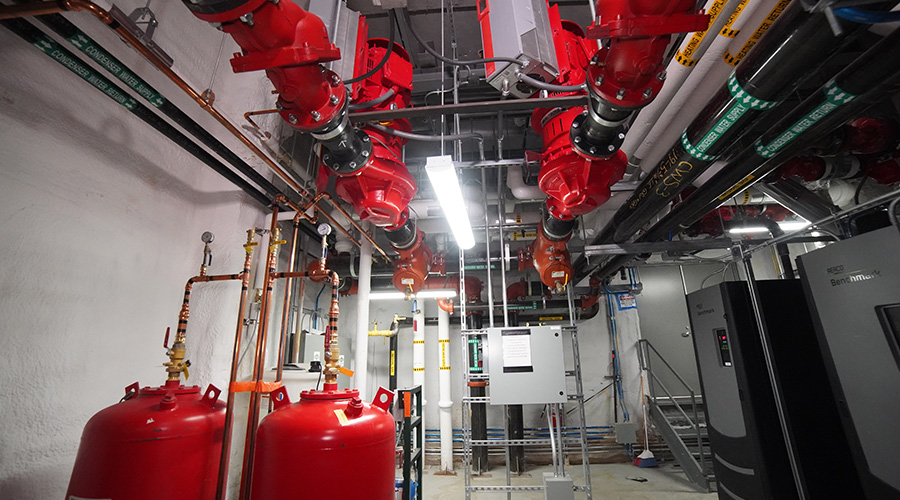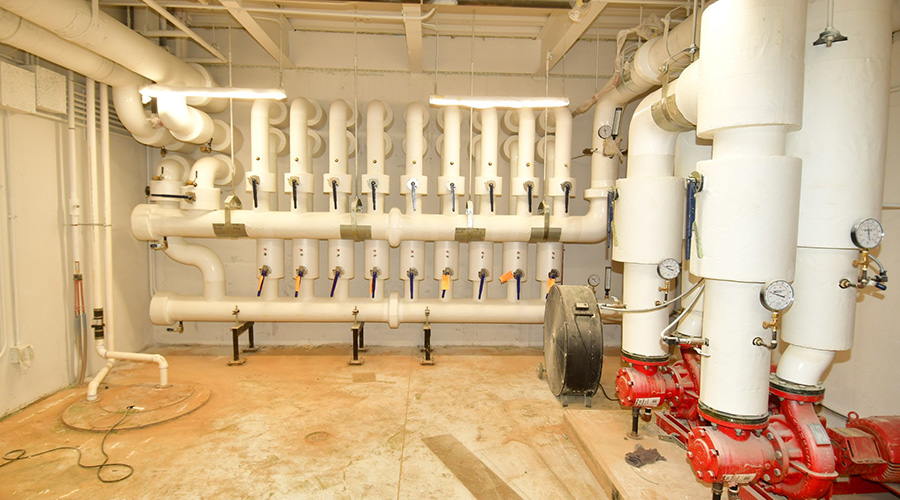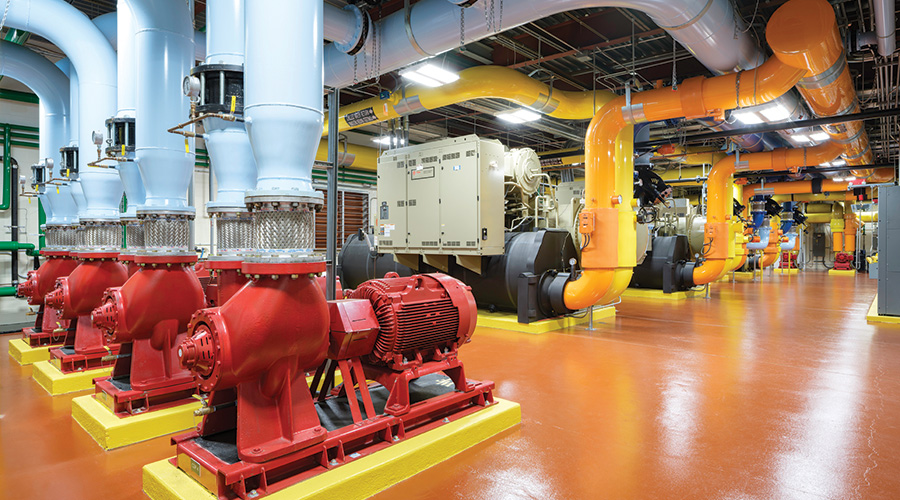 Before selecting new HVAC equipment, analyze the way the building is currently being used to ensure that the replacement system is properly sized to meet the requirements of the application.
Before selecting new HVAC equipment, analyze the way the building is currently being used to ensure that the replacement system is properly sized to meet the requirements of the application.Is New HVAC Technology Worth The Money?
Tips: Don't limit economic analysis to first costs and be sure the new technology is suitable for your particular building.
The demand for improved performance in building HVAC systems has led to significant innovations in technology. The rate of innovations is accelerating, and the range of new options can be overwhelming to facility managers. The result can be analysis paralysis. Without a clear indication of which system is best suited for a particular application, facility managers have a tendency to fall back on what they’ve used in the past. While this is the safe approach, it causes them to miss out on energy efficiency and other performance gains. And because HVAC systems tend to be in place for 20 years or more, these missed opportunities are significant.
Just as no two building applications are exactly the same, there is no universally suitable HVAC technology upgrade. What facility managers need is a process that will allow them to evaluate and compare technology options when replacing or upgrading an HVAC system or component to determine which is best suited for the application.
Evaluating new and alternative HVAC technologies is a three-step process: economic analysis, feasibility analysis, and performance analysis.
Economic analysis
Unfortunately, most economic comparisons made between competing HVAC technologies are limited to first costs. First-cost analysis is the simplest and easiest to understand. It tells you what it will cost to invest in a particular technology, and it shows if there are sufficient funds in the budget to go with a particular technology. But first-cost analysis doesn’t take into consideration that many of the innovations in HVAC systems and components, while more expensive than their conventional counterparts, also offer greater value. If funding is limited, facility managers may have no choice but to select the lowest first-cost option that meets the project’s budget, but chances are they are not getting the best long-term option.
A common alternative to first-cost analysis is simple payback. In its most basic form, simple payback determines how long it will take an investment in a particular technology that costs more than a traditional system or component to recover those additional costs through savings. In most cases, the analysis looks primarily at reduced energy costs.
Simple payback can be a useful tool for evaluating cost benefits of alternative HVAC systems. It has the advantage of being easily calculated and easily understood. But simple payback does not take into consideration all of the costs and benefits related to a particular investment. For example, simple payback does not include key factors such as inflation, reduced maintenance requirements, and longer HVAC system life.
A more complex and inclusive analysis is to evaluate life-cycle costs. Life-cycle cost analysis calculates the total cost of ownership of a particular HVAC technology over that technology’s life. It takes into consideration a wider range of factors, including first costs, the impact of inflation, the cost of training operating personnel, projected maintenance costs, projected energy costs, the cost of additional space requirements, and the cost of disposal at the end of the equipment’s service life. In essence, it allows a comparison between HVAC system alternatives that takes into consideration the total cost of owning that system over its entire service life.
While life-cycle cost analysis provides the most comprehensive comparison of alternative HVAC system technologies, it has two significant drawbacks. First, it is complex, typically requiring outside help in identifying all of the factors that must be included in the analysis. Second, it requires significant assumptions to be made concerning the impact that a particular system will have on the operations. This is particularly difficult when dealing with new HVAC technologies that may not have a sufficient track record.
In spite of these limitations life-cycle cost analysis will provide the best economic analysis of competing options.
Feasibility analysis
Where an economic analysis compares the costs of alternative technologies, the feasibility analysis examines how suited a particular technology is to a given application. No matter how good the economic case is for an HVAC option, the requirements of a particular application must be closely examined.
Consider a building which has an HVAC system that incorporates a central chiller and boiler that supplies heated or chilled water to some sort of terminal unit throughout the building. One alternative to this configuration might be the use of water-source heat pumps throughout the building. During the heating season, the water-source heat pumps would extract heat from the central HVAC water loop. During the cooling season, the heat pumps would be cooled by the circulating water from the central loop. The central boiler would add heat to the loop during the heating season, and a cooling tower would reject heat to the atmosphere during the cooling season.
The advantages of this type of system include no need for a central chiller, the ability to provide space heating and cooling at the same time to different areas without having to upgrade to a four-pipe system, and transferring at least some of the energy costs to the end users.
While those are strong advantages, this type of system may not be feasible if the installed electrical service is not large enough to support the individual heat pumps.
Utility requirements are only one portion of the feasibility analysis. The analysis must also determine if the technology being considered is suitable to the building occupants. Are they capable of using the technology that is being installed or is it so far above their skill level that it will interfere with their operations? Systems that are too complicated to be operated properly will not perform as designed or intended, thus cancelling many of their potential benefits.
Also consider the operations and maintenance requirements of the new technology. Is there sufficient skilled labor in-house to operate and maintain the system? Is additional training required? And if outside vendors are needed to support the system operation, is it available locally? What would the typical response time be?
New HVAC technology can collide with local building codes. Codes tend to be backward-looking, establishing requirements to avoid repeating past problems. Those requirements may be in direct conflict with how new HVAC technologies function. Before committing to a particular HVAC technology, meet with the local code officials to determine if the system is acceptable.
Related Topics:














